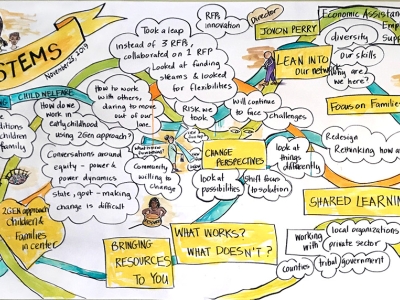Introduction
Welcome to the next online-exclusive edition of the CURA Reporter. Learn more about the CURA Reporter and subscribe.Sitting around six tables in a bright room, about forty-five civil servants from the Minnesota’s Department of Human Services joined a day-long planning session of a new policy initiative that aims at advancing two-generation approaches that improve outcomes for children and parents altogether — the Minnesota 2-Generation Policy Network. Some of the participants were apprehensive as they often…
